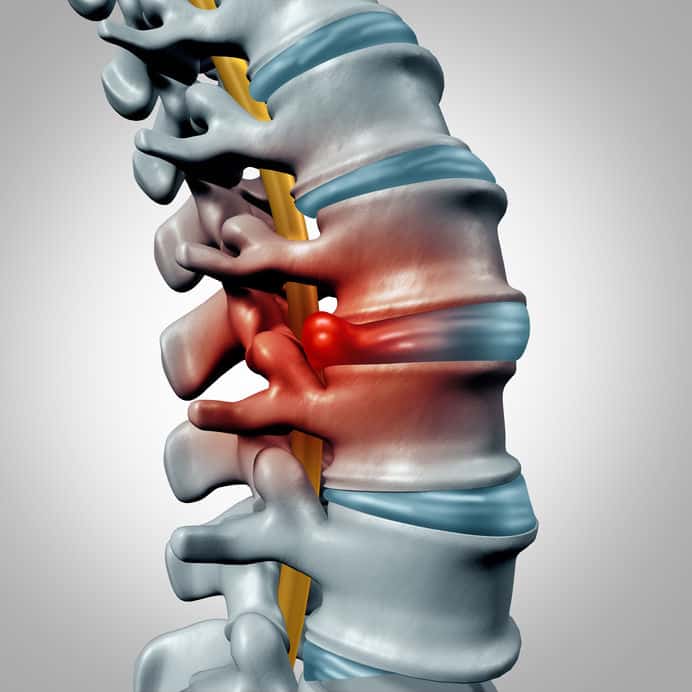Herniated Cervical Discs can be a challenge.
Anatomy of Cervical herniated discs and the spine
It is helpful to understand the anatomy of the cervical spine when discussing herniated cervical discs. The cervical (neck) region contains seven vertebrae. Each vertebrae is separated by a disc. The disc is a gel-like substance. It helps to absorb shock. The cervical spine helps to support the weight of the head, which is ten pounds. At each disc level, a pair of spinal nerves exits from the spinal cord. These nerves then branch out into your body. They act as a “telephone” to send messages and impulses to and from your brain. They relay sensation and control movements.
What is a herniated cervical discs?
A herniated disc occurs when the gel-like substance ruptures. This causes it to leak out of the rough disc wall. The gel material then irritates the spinal nerves. As a result, nerve inflammation and swelling is caused by the herniated disc. When a herniated disc occurs in the cervical region, it can cause neck and /or arm pain. Over time the herniation will shrink. This may result in a partial or complete pain relief.
Symptoms of Herniated Cervical Discs
Symptoms of a herniated cervical discs vary greatly. It depends on the location of the herniation. If you have a herniated cervical disc, you may feel pain that radiates down the arm. It can also radiate into the hands. Pain can also travel into shoulder blades and neck. Muscle spasms may also occur. This means the muscles tighten uncontrollably. The pain can also be accompanied by numbness or tingling. Muscle weakness in the biceps, triceps, and handgrip may also be a symptom.
Causes of Herniated Cervical Disc
Disc can bulge because of an injury or improper lifting. It can also occur spontaneously. Aging is a big factor in herniated discs. As you age, the discs can dry out and become harder. The tough outer wall of the disc may weaken. This material can bulge or rupture through a tear in the disc wall. This can cause pain when it touches a nerve. Other factors like genetics and smoking can play a role in disc degeneration.
Chiropractic Treatment for Herniated Cervical Disc
A chiropractor can help address back pain. Chiropractic treatment uses a holistic approach to care. Even if you only have neck pain, they will evaluate the entire spine. What happens in one area of the spine can influence other areas of the body. They may also look at your posture, muscle strength and other factors. A gentle manual manipulation will be performed. This can help alleviate joint dysfunction. Joint dysfunction can be an added component to pain to a herniated disc.
Physical Therapy for Herniated Cervical Disc
Treatment for herniated cervical discs can depend on severity. The first step is to reduce the pain. This can be done by taking medication to reduce inflammation. Applying ice, working on posture, and an exercise regimen can also help reduce pain. A physical therapist is recommended to develop posture correction. Stretching exercises are also recommended to prevent re-injury.
